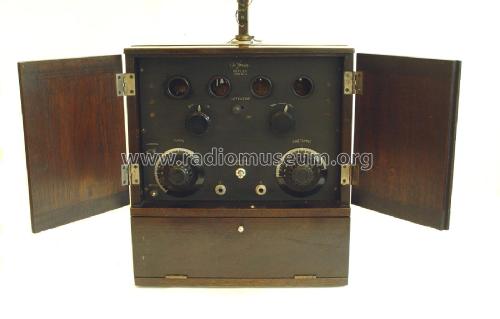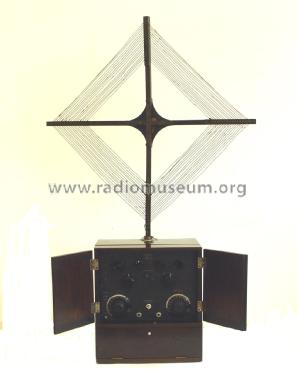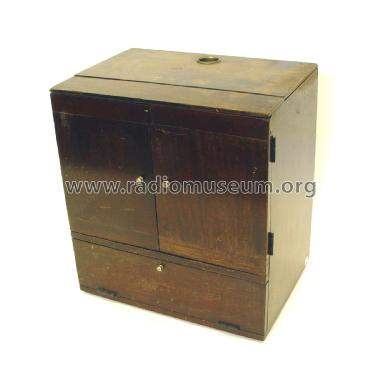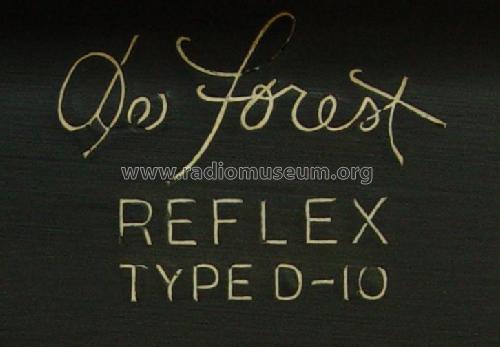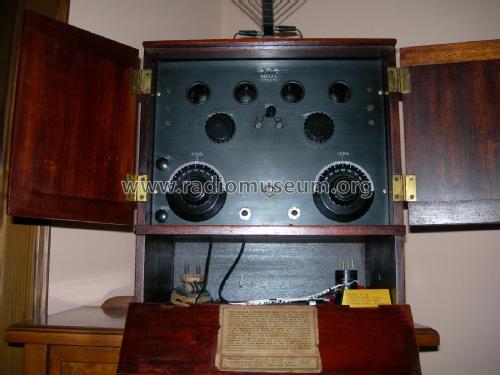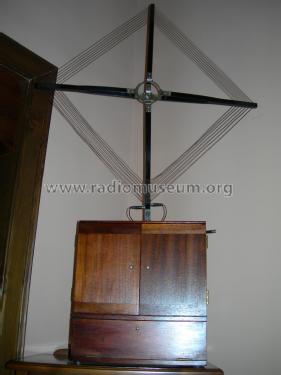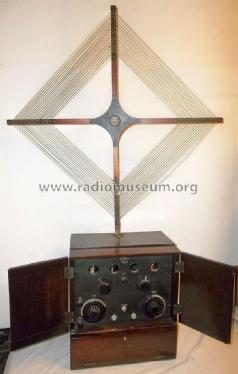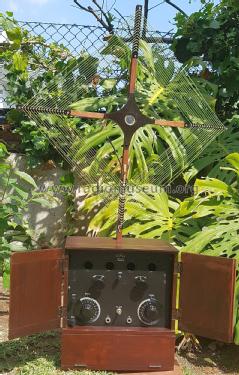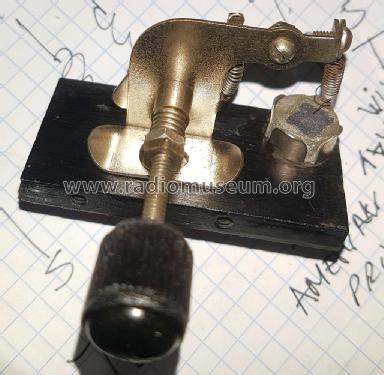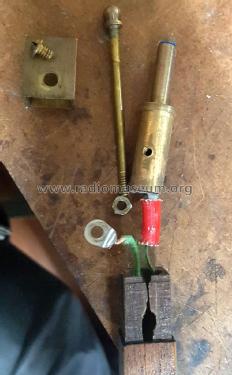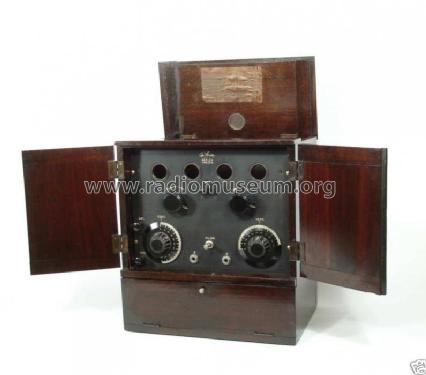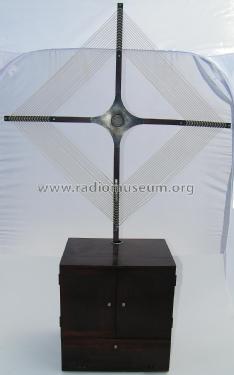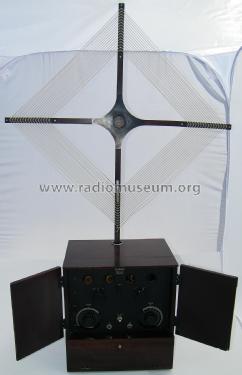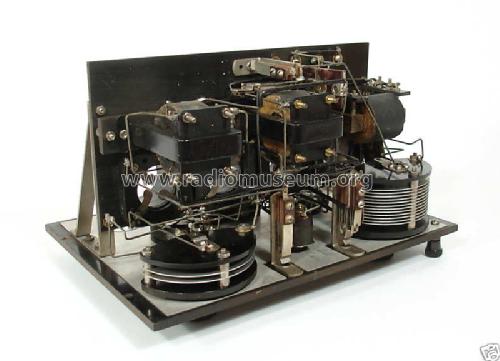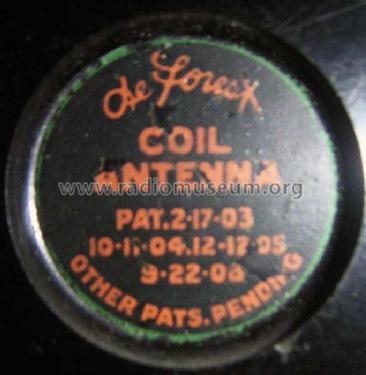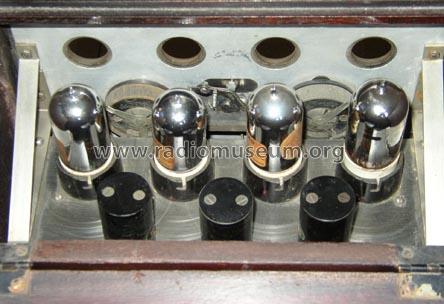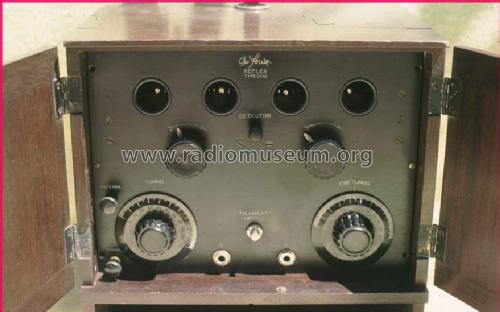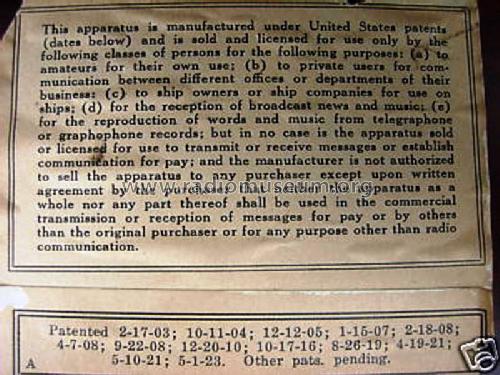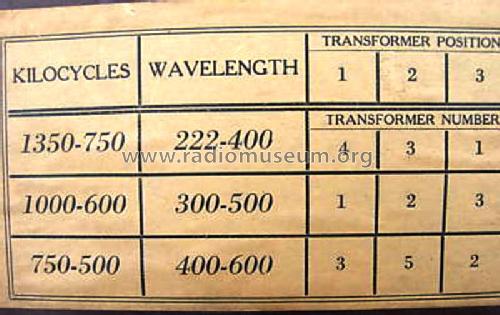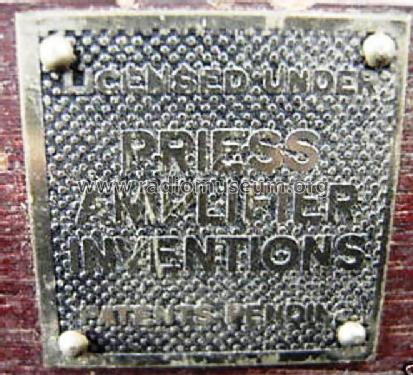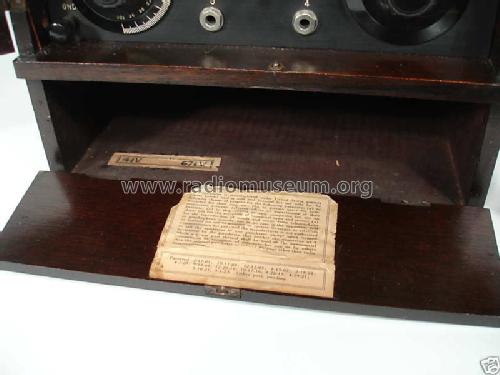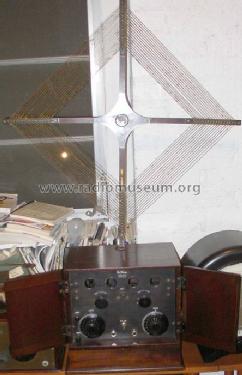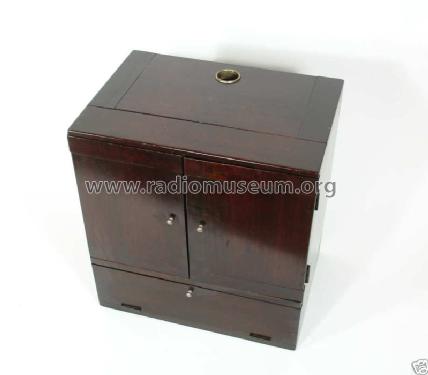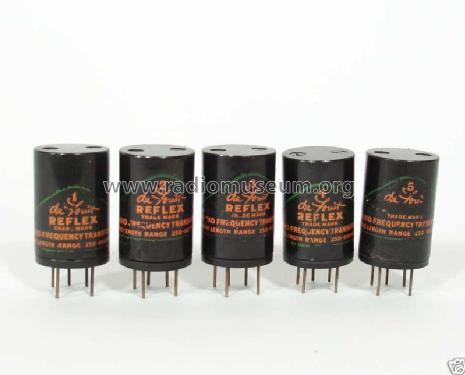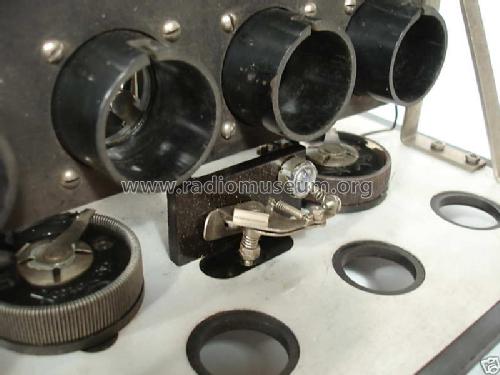- Produttore / Marca
- DeForest Radio Telephone & Telegraph Co. (De Forest); New York
- Anno
- 1923
- Categoria
- Radio (o sintonizzatore del dopoguerra WW2)
- Radiomuseum.org ID
- 37074
-
- alternative name: Lee De Forest Mfg.
Clicca sulla miniatura dello schema per richiederlo come documento gratuito.
- Numero di tubi
- 4
- Principio generale
- A circuiti accordati (TRF o amplif. diretta in generale); ZF/IF 3 kHz; 3 Stadi BF; Reflex
- N. di circuiti accordati
- 1 Circuiti Mod. Amp. (AM)
- Gamme d'onda
- Solo onde medie (OM).
- Tensioni di funzionamento
- Batterie a secco / 4.5 & 67.5 Volt
- Altoparlante
- - Questo apparecchio richiede altoparlante/i esterno/i.
- Materiali
- Mobile in legno
- Radiomuseum.org
- Modello: D10 - DeForest Radio Telephone &
- Forma
- Soprammobile a cassapanca o cassetta, solitamente con coperchio (NON a leggio)
- Dimensioni (LxAxP)
- 320 x 350 x 230 mm / 12.6 x 13.8 x 9.1 inch
- Annotazioni
-
One dial (primary tuning control knob). The D-10 is a 4-tube reflex receiver, using a crystal detector. Either Frank Squire or William Priess (the self-proclaimed "father of reflex") developed the D-10, although Gernsback gives credit for the invention of reflex to Marius Latour. In the D-10, two tubes have both RF and audio amplification functions. So, the receiver performs as a 6-tube radio (three stages of RF amplification and three stages of audio amplification) seven if the detector is considered. Reflexing is a rather sophisticated electrical design technique, since the interstage RF and audio transformers are arranged so that a single tube can perform two functions. For more information see "Antique Radio Classified" Volume 14, August 1997.
- Peso netto
- 7.2 kg / 15 lb 13.7 oz (15.859 lb)
- Prezzo nel primo anno
- 150.00 $
- Fonte esterna dei dati
- Ernst Erb
- Fonte dei dati
- Radio Collector`s Guide 1921-1932
- Riferimenti schemi
- Rider's Perpetual, Volume 1 = 1931/1934 (for 1919-1931)
- Bibliografia
- Collector's Guide to Antique Radios 4. Edition
- Letteratura / Schemi (1)
- Radio Manufacturers of the 1920s, Vol 1 (page 176)
- Letteratura / Schemi (2)
- Radio Broadcast, Aug. 1923, Page 338
- Letteratura / Schemi (3)
- Le Guide du Collectionneur TSF Biraud/Foster, Vol. I (page 146)
- Altri modelli
-
In questo link sono elencati 158 modelli, di cui 132 con immagini e 15 con schemi.
Elenco delle radio e altri apparecchi della DeForest Radio Telephone & Telegraph Co. (De Forest); New York
Collezioni
Il modello fa parte delle collezioni dei seguenti membri.

